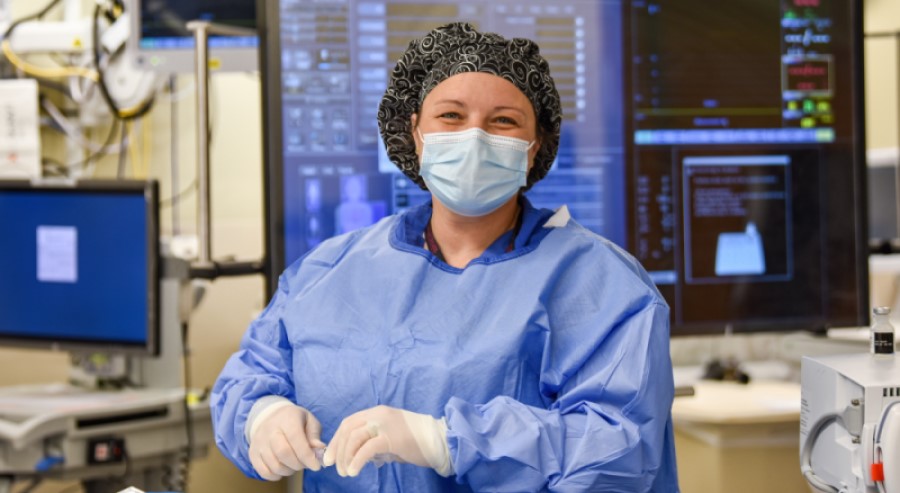Women's Health - Interventional Radiology

Interventional radiology uses image-guided technology that allows physicians to diagnose and treat many conditions affecting the uterus and fallopian tubes in a minimally invasive way — offering quicker recovery times and smaller incisions.
Imaging methods like CT, MRI, fluoroscopy and ultrasound guide a small, flexible hollow tube (catheter) containing medication, a camera or small instruments to the exact location to complete the procedure.
Interventional radiology treatments allow patients to avoid the large incisions, pain and longer recovery time of open surgery.
Specialists at University of Maryland Medical Center use interventional radiology procedures to treat women's health conditions including uterine fibroids, pelvic congestion syndrome (PCS ) and blocked fallopian tubes.
Uterine Fibroids
Uterine fibroids are the most common benign tumors affecting women of childbearing age. Made of muscle cells and other tissues growing in and near the uterine wall, the cause of uterine fibroids is unknown.
Uterine Fibroid Embolization
Also called UFE or uterine artery embolization, we use fluoroscopy to guide a catheter into the arteries connected to the fibroids and uterus. We deliver an embolic medication into the arteries, causing them to shrink and close.
UFE is a more permanent solution than hormonal therapy. Most women experience almost complete relief from uterine fibroid symptoms.
Pelvic Congestion Syndrome (PCS)
A painful chronic condition, PCS occurs when veins in the pelvic area enlarge. PCS affects women of reproductive age and often causes intermittent or constant pain for 3-6 months, unrelated to pregnancy.
Ovarian Vein Embolization
The interventional radiology treatment for PCS is ovarian vein embolization. The procedure uses X-ray imaging to guide a catheter inserted in your groin to the enlarged pelvic veins. Through the catheter, we deliver medication to seal off the veins, relieving pressure. Ovarian vein embolization requires minimal recovery time.
Blocked Fallopian Tubes
Fallopian tubes carry eggs from the ovaries to the uterus. Blocked fallopian tubes usually result from scar tissue or pelvic adhesions, or can be caused by pelvic inflammatory disease, endometriosis, and past ectopic pregnancy.
Fallopian Tube Recanalization
Also known as fallopian tube catheterization, this procedure uses fluoroscopy to guide a catheter through your cervix into your uterus and the opening of your tub. A small balloon or wire on the end of the catheter is used to clear the blockage.
Make an Appointment
Learn more about how interventional radiology and Women's Health at University of Maryland Medical Center or make an appointment. Call 667-214-1576.
